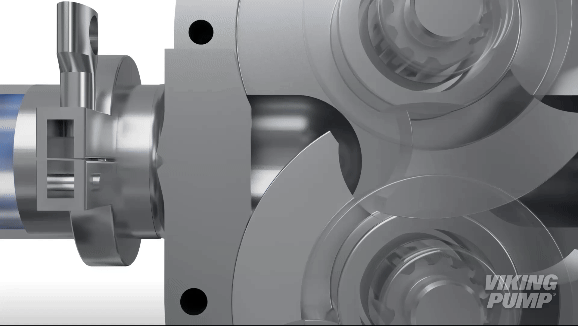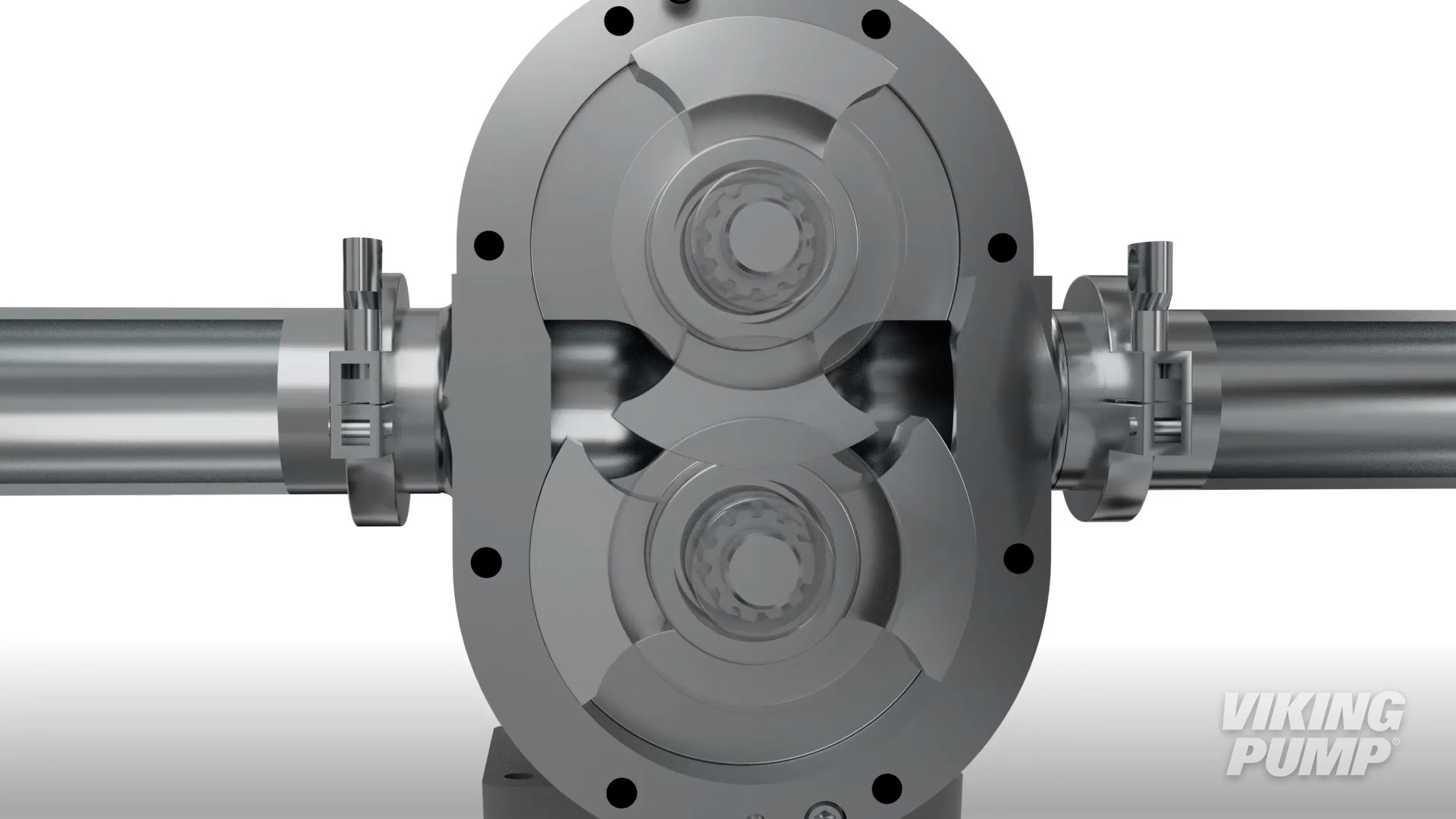Circumferential Piston Pump

A type of rotary positive displacement pump consisting of a pair of externally timed rotors such that each is driven independently and the rotors are non-contacting. Rotor designs vary but the most common type is bi-wing. Similar in operation to a lobe pump. Click here to view the Pump Report on this subject.
What is a circumferential piston pump?
Circumferential piston pumps (or external circumferential piston pumps) are a type of rotary positive displacement pump consisting of a pair of externally timed rotors such that each is driven independently and the rotors are non-contacting. Rotor designs vary but the most common type is bi-wing. These pumps are similar in operation to a lobe pump. Click here to view a video on this subject.
How do circumferential piston pumps work?
Despite the name, pistons have nothing to do with this pump’s operation. Like a gear pump, two rotors rotate in a close fitting housing – however, the rotors are driven independently on two rotating shafts. External timing gears ensure that the rotors do not contact.

As the rotors rotate, a cavity is formed at the inlet side of the pump – creating a vacuum that pulls liquid into the spaces between the tips of the rotor.

The liquid is trapped between the rotor and casing wall – and is carried around to the outlet. The tight clearance between the outside of the rotor and the hub of the other rotor ensures liquid does not pass between them.
At the outlet the reduction in size of the pumping cavity forces liquid through the outlet.
What are circumferential piston pumps used for?
Since circumferential piston pumps have such large pumping cavities and a non-contacting design, these pumps are ideal for thin and viscous liquids as well as liquids containing large solids. They can be easily cleaned, making them ideal for applications requiring sanitary construction and frequent cleaning.






